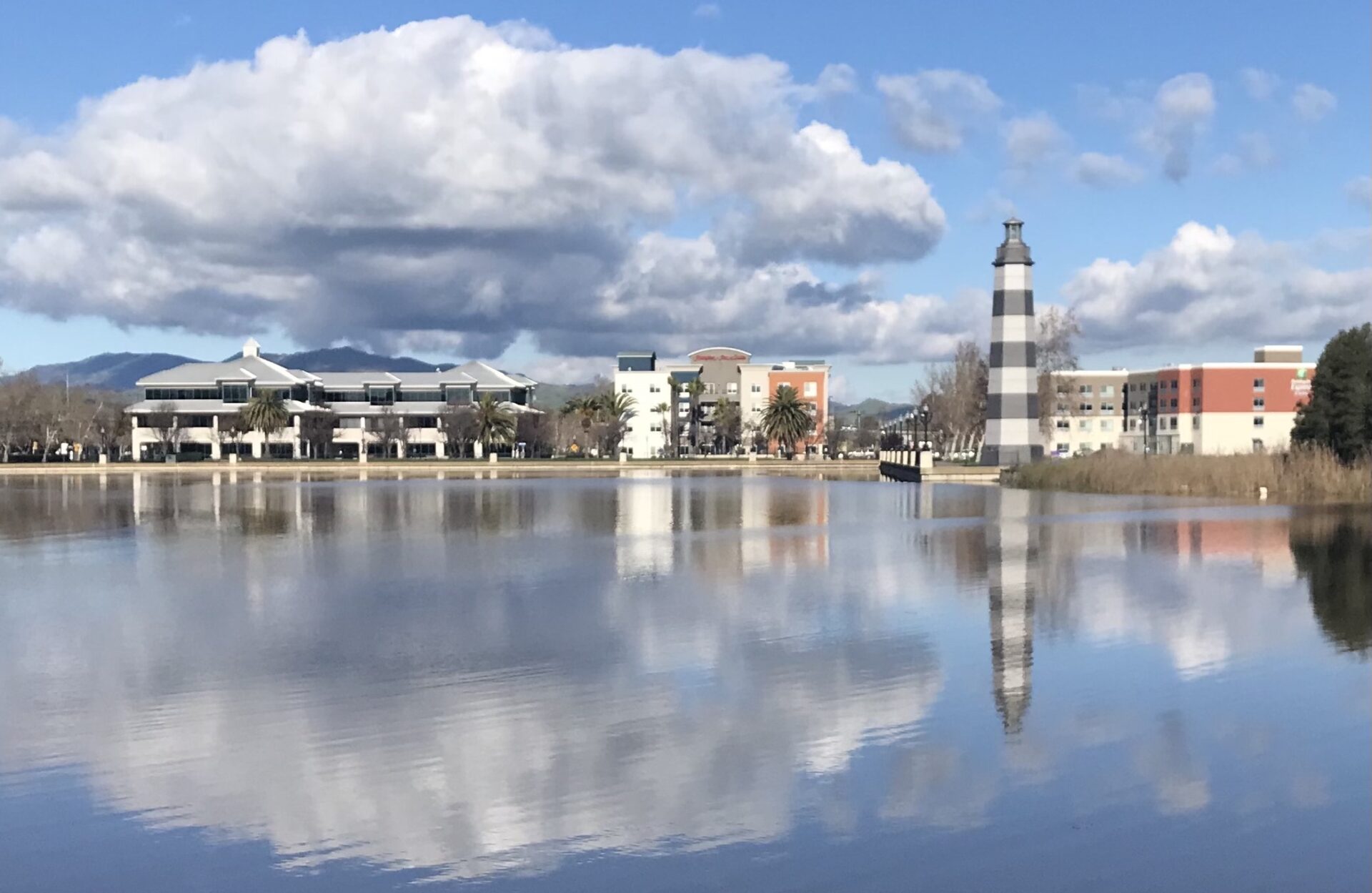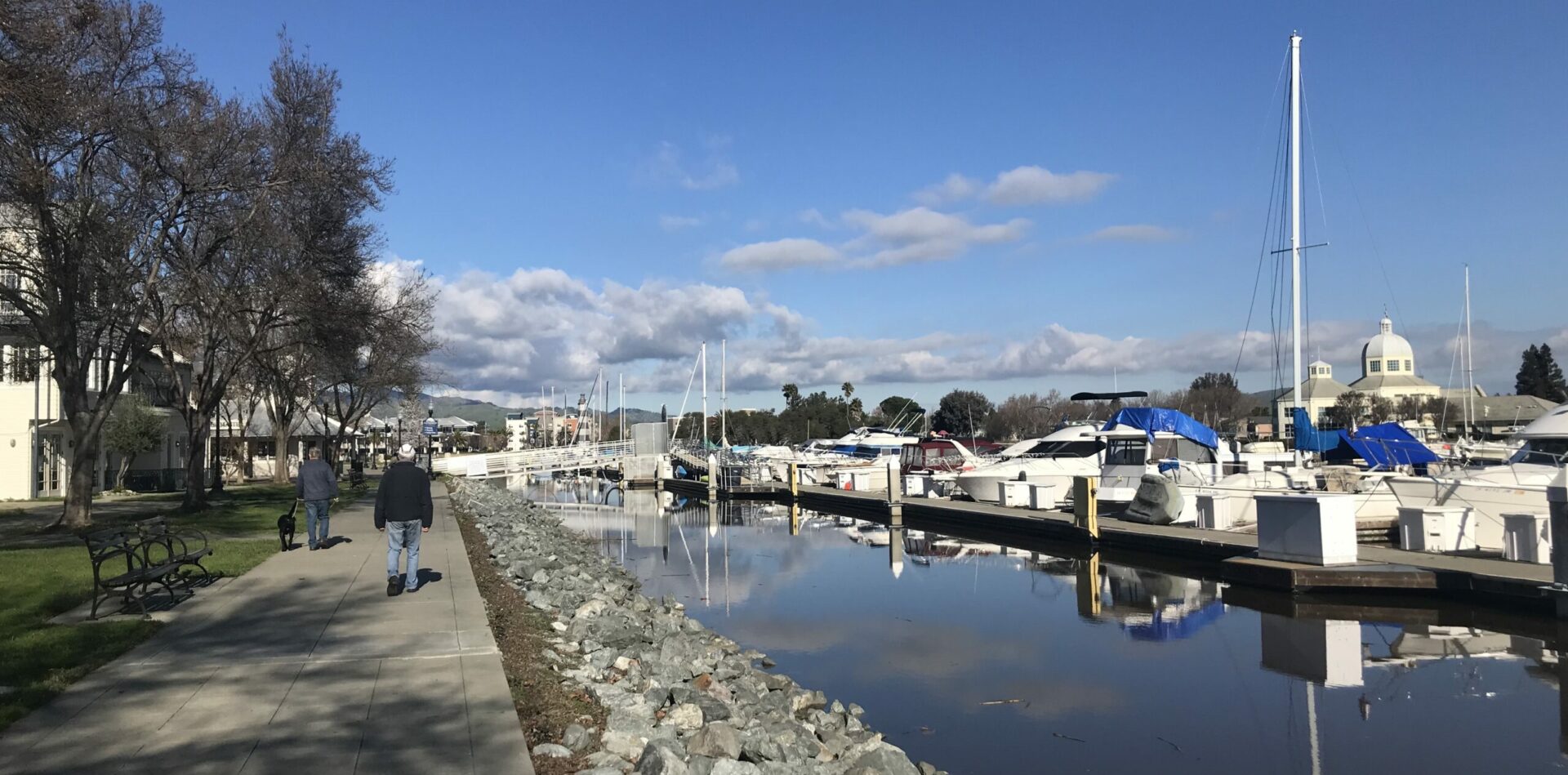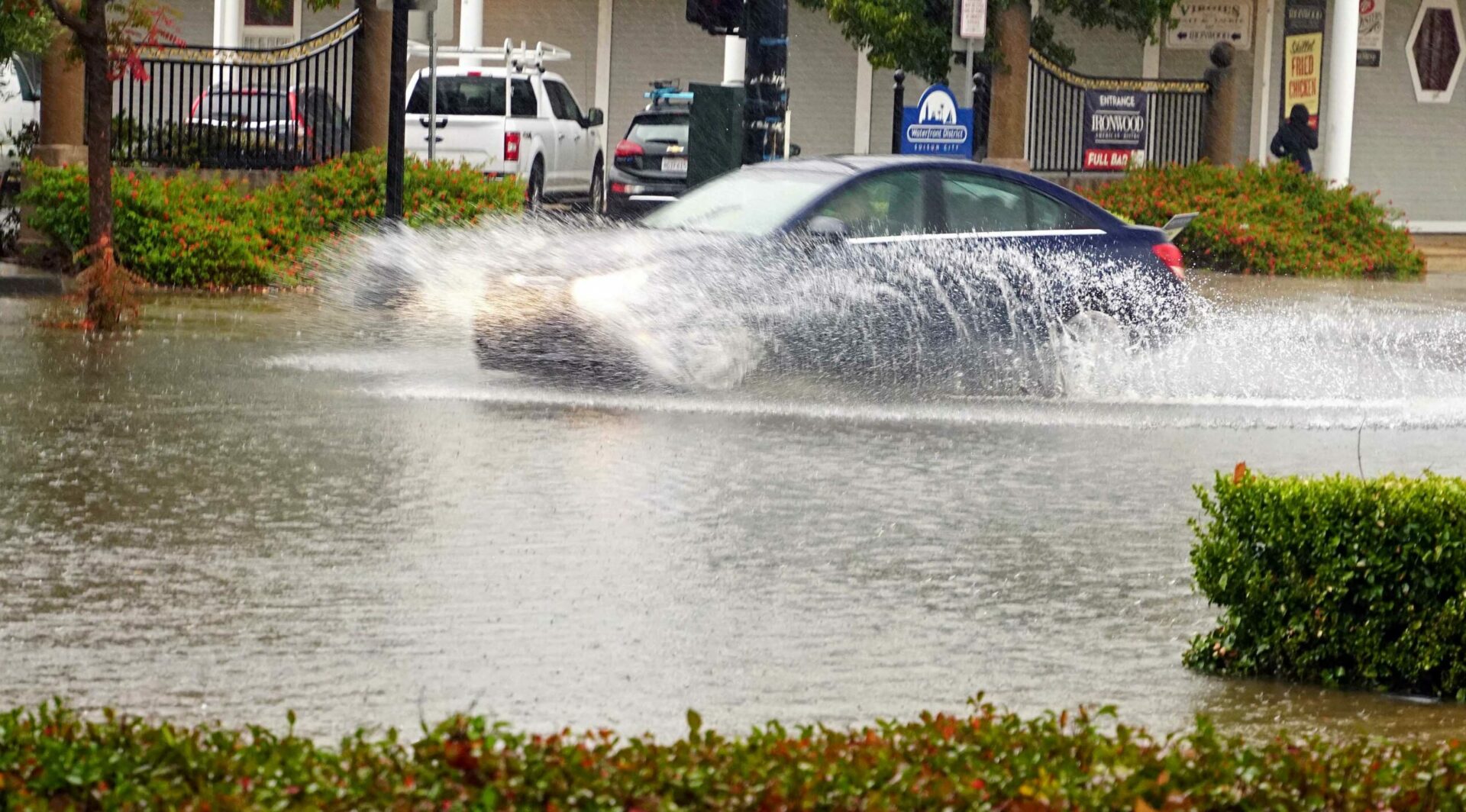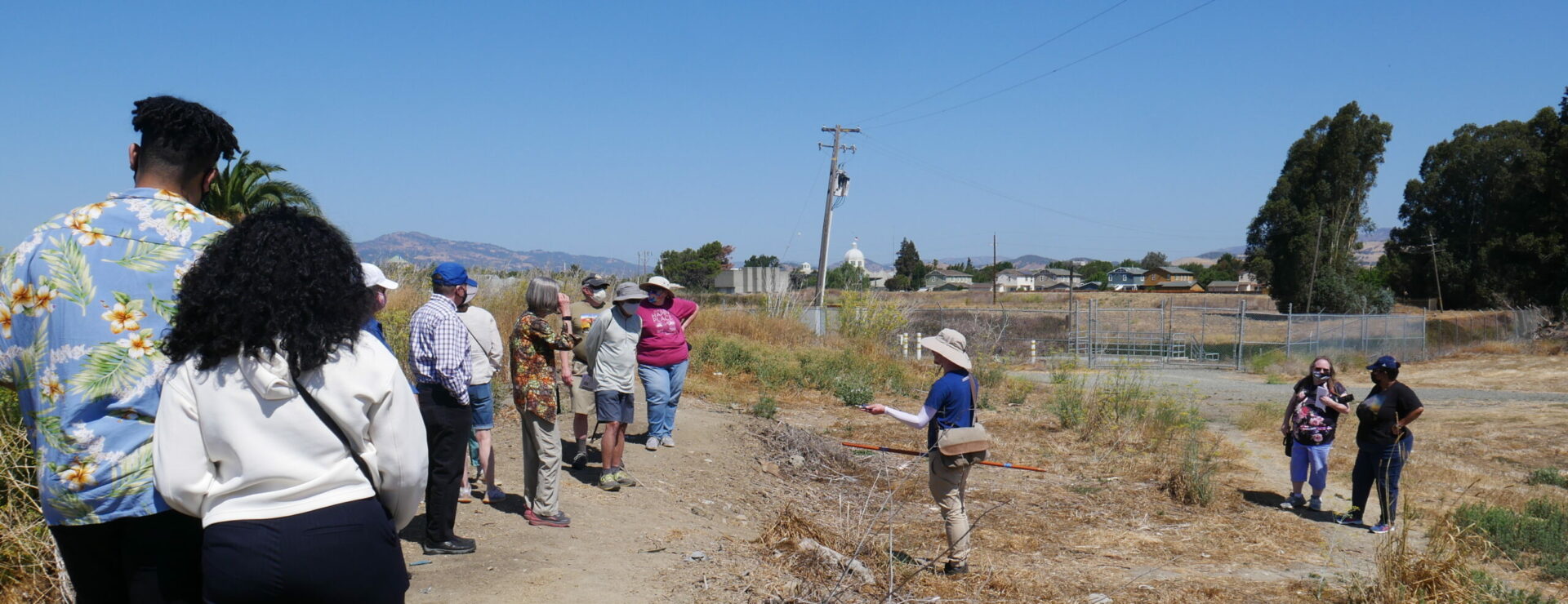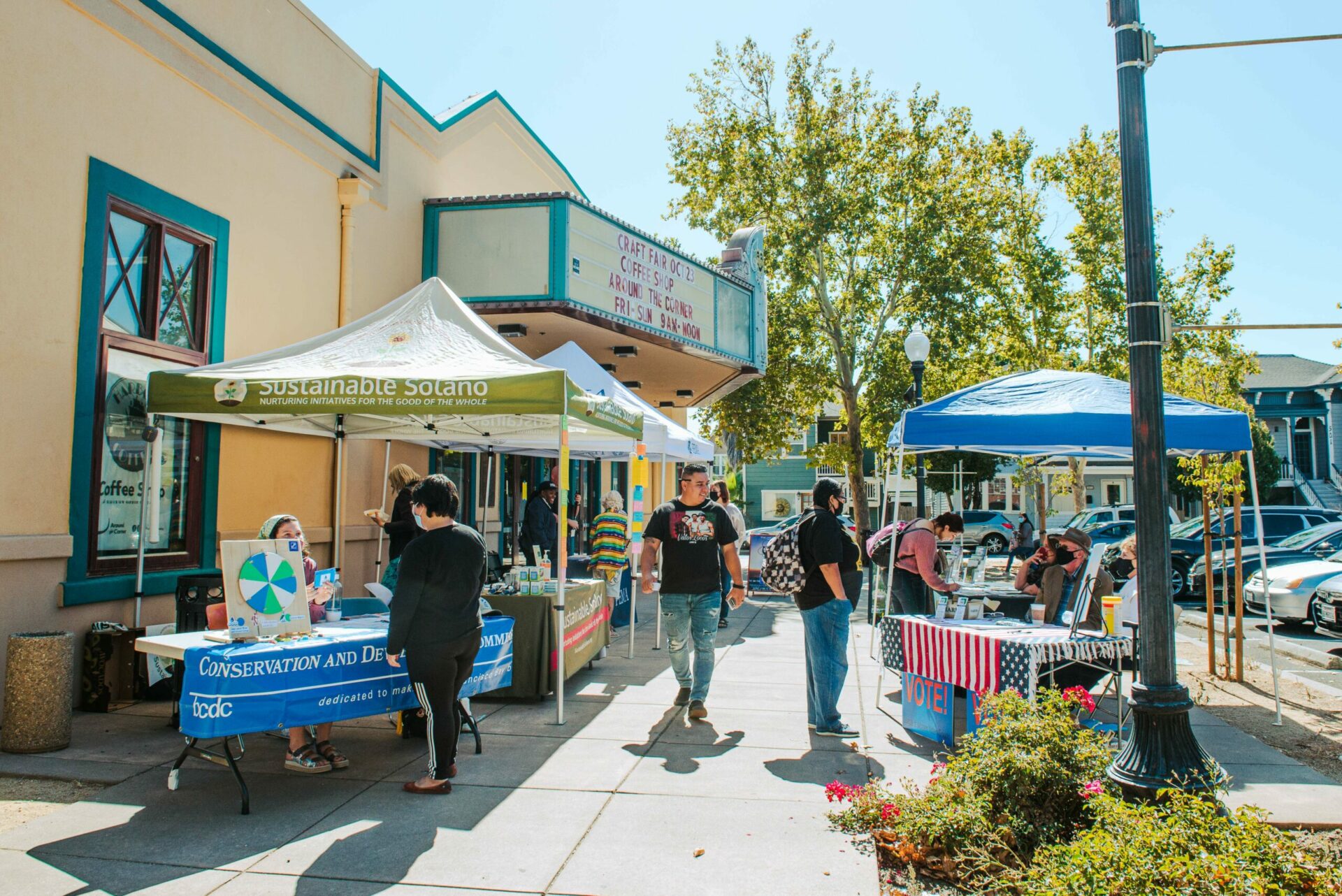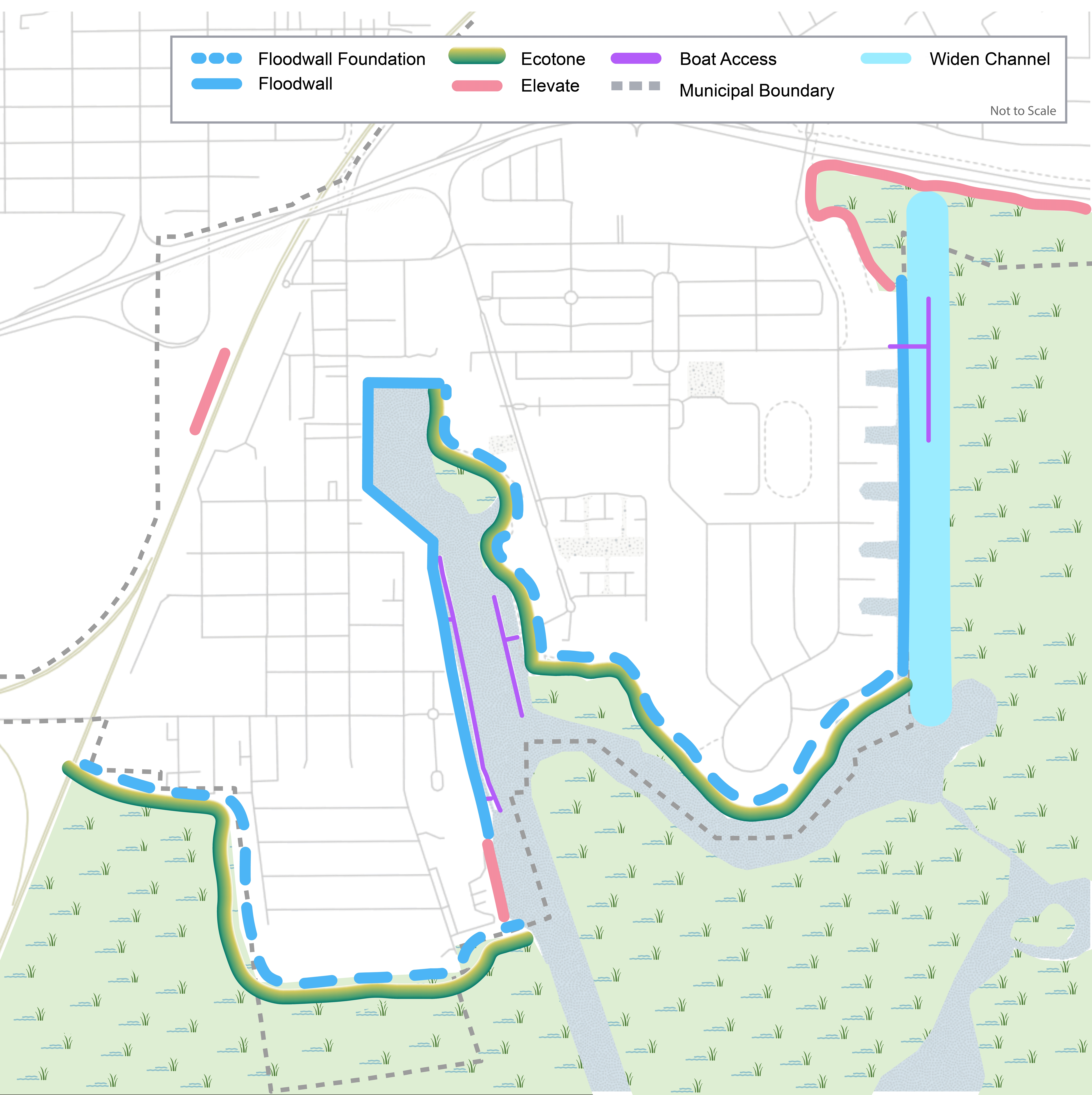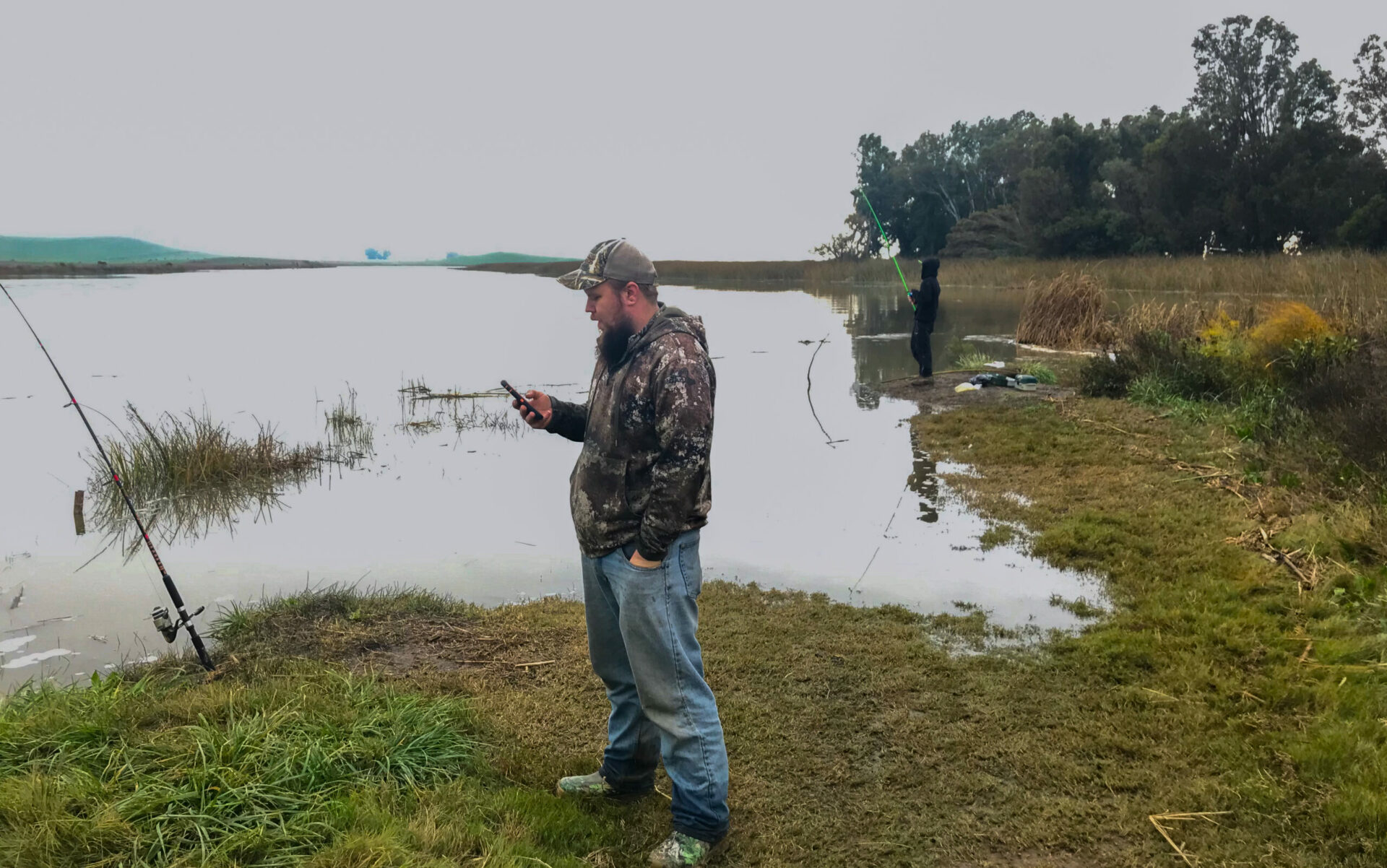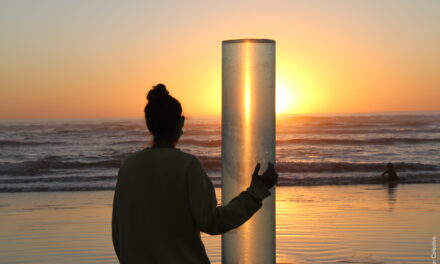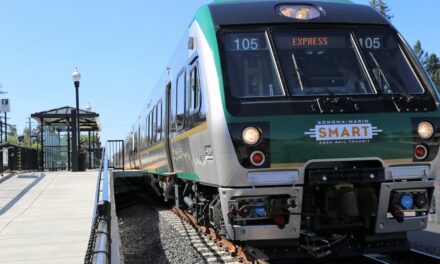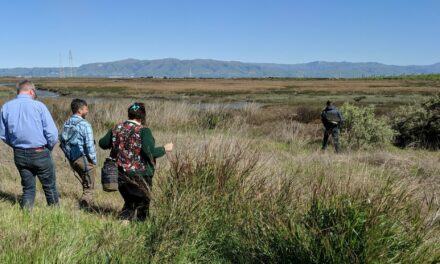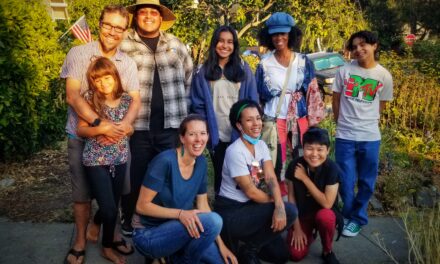Suisun City Is No Island
Two hotels and offices flank Suisun City’s redeveloped waterfront, an area at the terminal end of a slough susceptible to rising water levels.
Photo: Aleta George.
“There are probably ways to build more sustainable shores…We can’t be afraid to have those conversations.”
Suisun City, a small town about an hour northeast of San Francisco, has always had the waterfront and nearby wetlands at its heart. But that which is a big plus for trade and tourism now places the city in the path of sea-level rise.
“It won’t take a lot to make the entire area vulnerable to flooding. It’s a huge challenge,” says Dr. Kris May, a coastal engineer who founded Pathways Climate Institute.
Suisun, which means “west wind” in the Patwin language, was home to the Patwin people for thousands of years. When Gold Rush entrepreneurs built a working wharf in Suisun City in 1851 to move agricultural goods from the surrounding hills to San Francisco and Sacramento, the adjacent land was described as a small island five feet higher than the surrounding marshes.
The railroad came and the city grew, radiating out from the waterfront at the upstream end of Suisun Slough. The slough winds its way to Suisun Bay through the Suisun Marsh, the largest intact complex of brackish marsh on the West Coast, home to rare flora and fauna and temporary resting and feeding grounds for migrating waterfowl on the Pacific Flyway. The city’s boat ramps serve as launches for those in kayaks and motorboats who fish, hunt, and explore nature in the Suisun Marsh.
Beginning in 1989, the city embarked on a transformative (and expensive) redevelopment project. Seawalls now enclose the end of Suisun Slough. A palm-lined promenade, a marina, and a waterfront park fringe the basin where shoreline fishing, free jazz concerts and outdoor movie nights, and firework displays draw regional visitors and Suisun City residents. In 2019, the Association of Bay Area Governments ranked this small North Bay town of 29,669 (including this writer, a local resident) as the most racially diverse in the region. But with climate change, the future of Suisun City, along with the winds, and the tides — to borrow a phrase from Bob Dylan — “they are a-changin’.”
Revealing Vulnerabilities
The California Ocean Protection Council projects sea levels could rise by up to 12 inches by 2030, and as much as 32 inches by 2050, working off a baseline from the year 2000. If nothing is done in this waterfront town, 24 inches of sea-level rise could flood portions of southern Suisun and much of the east side by a foot, according to the Bay Shoreline Flood Explorer. The Flood Explorer is an interactive mapping tool created by the San Francisco Bay Conservation and Development Commission’s Adapting to Rising Tides program, or ART.
Those working in the ART program have been helping cities and communities figure out their vulnerability to sea-level rise for more than a decade, but recently realized that jurisdictions needed a different skill set for adaptation. They began to develop a roadmap for navigating that complex process, which BCDC coastal scientist Jaclyn Mandoske calls “a practitioner’s guide.” The resulting Adaptation Roadmap is slated to be published in March.
To enrich this new resource, BCDC developed two site-specific case studies. One focused on the south Richmond shoreline, and the other on Suisun City, which according to Mandoske was chosen for its priority conservation and development areas (nominated by local governments), vulnerable communities, and transportation assets such as the rumbling freight trains and Capitol Corridor commuter cars that slide through the northwest side of town on the Union Pacific rail line. Another reason that BCDC chose Suisun City was because the town didn’t yet have a “robust” adaptation plan in place, and the case study might prove helpful to city officials in their conversations with the community about which actions to take.
The case study, prepared for BCDC by Kris May and her team, is a hypothetical blueprint for the city in its quest for sea-level rise resiliency. The agency and the team never intended it to be binding, as the city, community, and local agencies didn’t participate in the study’s development.
The case study includes resilience and planning principles, and suggestions on how to engage the community and partners. It also explores how to adapt to, or protect or retreat from, rising water. On the ground, the study suggests these strategies could take three possible forms: nature-based, ecotone habitat levees at the marsh edges; floodwall citadels that surround the city; and a hybrid of the two. Suisun City marshlands are protected, and any alterations to the wetland edges require collaboration with appropriate agencies and compliance with federal and state laws.
BCDC and May presented the case study to the city in 2019. “It sounded like there was an interest in moving forward, but to my knowledge they haven’t,” says May. “There’s a lot of money available for climate-resilient efforts, including for capacity building. Suisun City should try and get some. They’re falling behind other Bay Area communities.”
“I’m concerned about cities like Vallejo, Benicia, and Suisun City that are on waterfronts. There’s going to be a tremendous impact to those communities,” says Jim Spering, former major of Suisun (1986-2006) and Solano County supervisor since 2006. “We need to start understanding that there has to be a strategy to deal with it.”
A car sloshing down Main Street during the late October 2021 unusually intense atmospheric river storm.
Photo: Tom Muehleisen.
Avoiding the Worst Thing
As small towns like Suisun City confront big climate challenges, they will need both homegrown initiatives and robust government help to successfully adapt.
“The city has to put its own stamp on it,” says May. “The most important thing is to bring your community along with you in the process to develop solutions. It doesn’t have to be scary. The goal of getting started now is to not have the worst happen.”
Suisun City has begun an education campaign to make its community aware of the risks, says vice mayor and city councilmember Alma Hernandez, who grew up in Suisun and leads the Suisun City climate and environment committee. The campaign has included door-to-door outreach in the most vulnerable areas; educational flood walks in partnership with Sustainable Solano conducted in English and Spanish (with plans to offer them in Tagalog for Filipino residents); and the city’s first annual Climate and Environmental Festival this past fall.
A Climate and Environmental Festival held downtown on Oct. 9, 2021.
Photo courtesy: Sustainable Solano
“We want to ensure that each year we are designating a space and time to bring community around this topic,” says Hernandez. Once the councilmembers have costs and designs of alternatives in front of them, they will host workshops and forums so that community members can provide input, she adds.
The city’s seven-member climate and environment committee (which includes two councilmembers) have also been educating themselves, identifying risks, researching ways to mitigate those risks in the future, and looking for opportunities to make recommendations to the rest of the city council. The next step is to bring collaborators and agencies together to look for funding, says Hernandez.
The Island of Suisun City
In some ways Suisun City is still an island, a feature that may help it. Unlike other bayside cities, and thanks to the surrounding wetlands, the town is not dependent on neighboring cities to make decisions. “It’s really in charge of its own destiny,” says May. Those same wetlands offer opportunities for nature-based solutions (such as a new style of levee that includes transitional wildlife habitat and shoreline protection) that other cities with more urbanized waterfronts around the Bay don’t have. “It would be great to see Suisun not build a big wall around themselves, and instead embrace the environment that surrounds them. It could be an amazing pilot project in nature-based adaptation.”
Mid-term adaptation scenario, assuming 52 inches total water level over recent levels, from the Suisun City case study showing waterfront protection options (including an “ecotone” or “horizontal” levee).
Map courtesy: Pathways Climate Institute.
Although wealthier counties in the region like Marin and San Mateo have been more proactive, many communities, like Suisun, are just getting started. “The topic is so challenging,” says BCDC’s Mandoske. “There are tradeoffs between development and the environment, and between generating revenue and protecting people.” Some communities may just not know where to start, speculates Mandoske.
“I think it’s just a lack of understanding of what they need to do,” says Spering. “Cities like Suisun have tremendous financial challenges and to lay something like this on top of the challenges they already have is very difficult.”
Many coastal cities are worried about scaring off developers. “But that sentiment is changing,” May says. “If we start the conversation, and include developers, there are probably ways to build more sustainable shores. It doesn’t have to be a gloom-and-doom situation. We can’t be afraid to have those conversations.”
Reflecting on the Home of the West Wind
For me, Suisun City is home. I live across the street from the waterfront in a Victorian house built in the 1880s, which my husband and I will leave to our children and grandchildren — and are hopeful that they will get to live in it.
When I moved to Suisun City 23 years ago, great blue herons, snowy egrets, pickleweed, and salt grass became part of my vocabulary. Now I will add sea-level rise to my conversations, but have discovered that my neighbors and nearby waterfront business owners aren’t there yet.
Jamie Glazier, the owner of a chic hair salon on the promenade, works six days a week and isn’t worried about it. Magda Funk, owner of a craft and curio shop on the waterfront, refurbishes old chairs to keep them out of landfills. “What I’m concerned about right now is COVID. Can I open my doors? How do I attract people to the area?” she says.
My neighbor George Burket commutes to San Francisco. While he is aware of the king tides overtopping the Embarcadero, he doesn’t think about it that much in Suisun. “There are so many other things in life I have to worry about,” he says.
The conversation may seem difficult when there’s no water lapping at the shore, but it will be much more difficult when it is. “We know that the seas are rising. That’s not in question,” says Mandoske. “What’s really in question today is how fast and when we might see the impacts. That’s why we have created the Adaptation Roadmap, to help people have these conversations in their communities, and to serve as a starting point when people don’t know where to start.”






